
Für eine deutsche Übersetzung dieser Seite einfach die Brandenburger Flagge anklicken
 |
Click the Brandenburg Flag for a German translation Für eine deutsche Übersetzung dieser Seite einfach die Brandenburger Flagge anklicken |


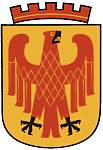 |
Home Towns - Potsdam, GermanyRoyal Stables & Film Museum |
 |





 |
This site is part of our Potsdam site. Click the left turn sign to get back to the
Potsdam Start Site. If you came here from our Vacation 2010 sites, click the green traffic light to return. |

|



|
Welcome to Potsdam's oldest building. Well, one of Potsdam's oldest building's anyway. The
Preacher-Widow's House two blocks up the street
was originally built 11 years earlier, but it was completely taken down and rebuilt 150 years later. So, at least, the
Royal Stables present the oldest still existing bricks in town.
|
 |
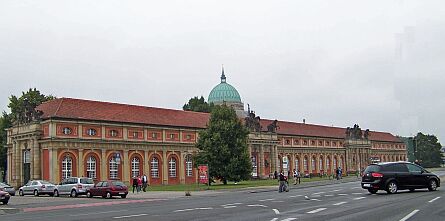
|
But this building too looks different from its original design. It was originally ordered by the
Great Elector as an arboretum for the City
Castle. It was designed and built in 1685 by Johann Arnold
Nering. Frederick William I, who ascended the Prussian Throne in 1713 and soon was known as the "Soldier King" did not have much use for an arboretum - he turned the building into a horse stable. Later, in 1746, his son, King Frederick the Great ordered a complete overhaul of the building. The new facade was one of the many works of the great Georg von Knobelsdorff. 
|
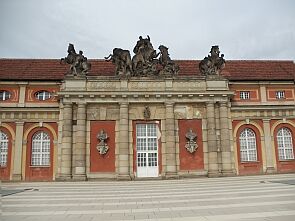 |
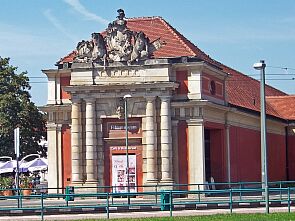 |
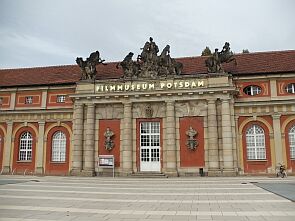
|
|
The horse sculptures were designed by sculptor Friedrich Christian
Glume, who also created most of the sculptures at Sanssouci Castle. |
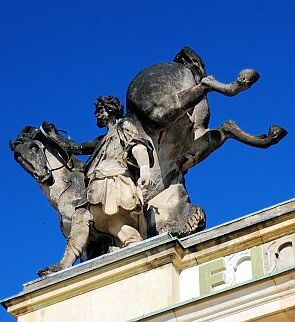 |
  
|
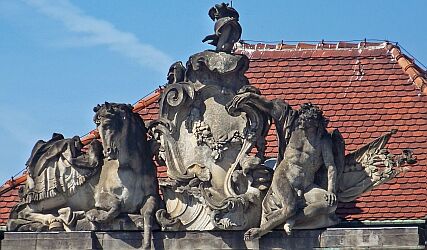 |
Detail-pictures above borrowed from wolfsraum. Like the City Palace, the Stables too were damaged in World War II and were destined to be demolished. Fortunately, socialist planning was always behind schedule - in this case, decades behind.  When the time was finally right, the master-mind behind the demolitions - communist Party leader Walter Ulbricht was no longer in charge and those urging the preservation of the building got stronger. Eventually, the idea to create Germany's first Film-museum, saved the building. |
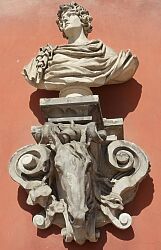
|
| Between 1977 and 1980, the building was completely restored and in 1981, the Film-Museum opened. |


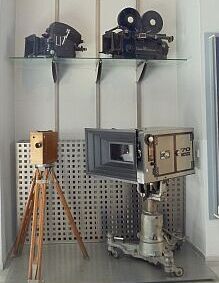 |
XXXXXXXXXXXXXFilm-Museum
The film studios of Potsdam-Babelsberg are the European movie capital.
Babelsberg claims to be the world's oldest large-scale film studio.*
* That claim depends a little bit on what is considered large scale. The first Studio in Babelsberg was founded by movie pioneer
Bioscope Gesellschaft in October of 1911. The first movie was shot in
February 1912. The first film produced in Hollywood, however, was shot four months earlier in October 1911, by
Nestor Motion Picture Company. |

|

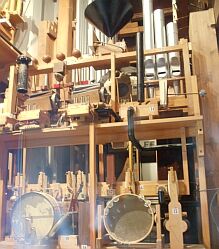 |
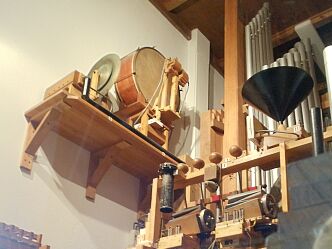 |
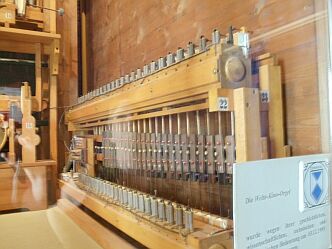
|

| Our favorite exhibit was the Cinema Organ. Theatre organs were used in the era of silent movies to accompany the movie and to imitate and replace an entire, costly orchestra. |
This particular instrument does not only provide all the sounds of a modern synthesizer (such as flute, violin, saxophone, oboe, clarinet, cello
and bugle), together with a broad variety of percussion instruments, from castanets to a kettledrum; it also plays a wide variety of special
sound effects. Peas drizzling into a metal funnel imitate rain and a vibrating thin metal sheet produces authentic thunder. Other possible
sounds are storm, running water, cow bells, bird sounds, trains and a ship's siren. It was built in 1929 by Welte & Sons for a movie theatre in Chemnitz. It sustained water damage in 1954 and was removed from the theatre a year later to make room for a wide screen. After years of neglect, it was beautifully restored in 1992 by Jehmlich Orgelbau and is now not only the museums most prominent exhibit but is also used in showings of silent movies almost every weekend. |
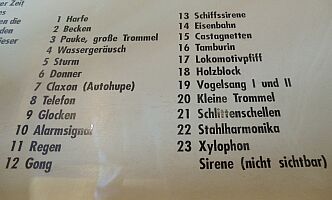
|

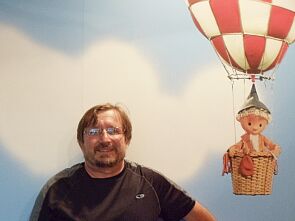 |
One special exhibition in the museum is dedicated to the Sandman (the person
to the right in the picture left). Sandman
is one the longest continuously running TV series in German TV. Since 1959, Sandman tells a five-minute bedtime story every evening at 7 pm. Over
the years, he arrived on the set in a number of different vehicles - from sledges to space ships. Many of his 240 props are shown in the
exhibition "Sandman's Motor Pool." Like almost everything in the divided Germany, there were originally two sandmen too - one in East German TV and one - ten minutes later - in West German TV. But the East German version was always more popular - even in the West. Consequently, the East German Sandman was one of only a handful of East German creations surviving the German Unification. The show is now in its 51st year and as popular as ever. |
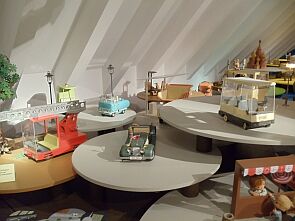 |
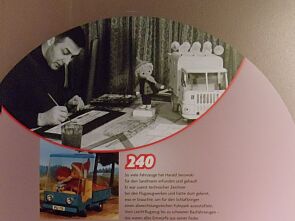 |
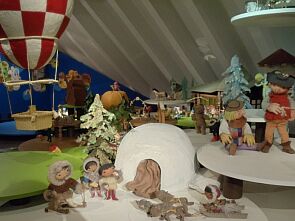
|
 |
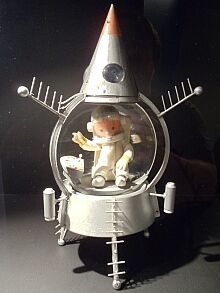 |
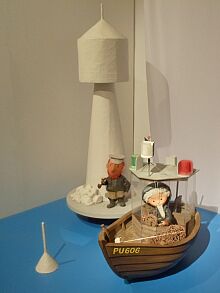 |
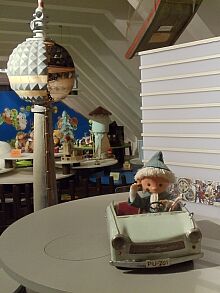
|
During the Cold War, even someone as innocent as the Sandman got entangled in politics. Soon after the first human space flight, Sandman too used
several spacecrafts to visit the children. However, his technology soon was more advanced than that of his real life Russian role models. And when
Sandman even landed on the moon (something the Russians never achieved), the officials pulled the plug and prohibited any future space adventures. His last appearance in Space was in 1978, when he accompanied East German astronaut Sigmund Jähn to the Soviet space station Salyut 6. Only long after unification, in 2000, there was a new space episode for Germany's most popular astronaut.
XXXXXXXXXXXX Sandman on board of space station Sajyut 6 with cosmonauts Bykovsky and Jähn |
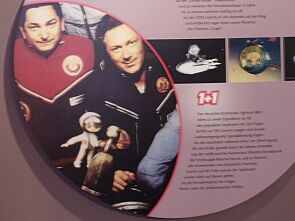 |



 |
This site is part of our Potsdam site. Click the left turn sign to get back to the
Potsdam Start Site. If you came here from our Vacation 2010 sites, click the green traffic light to return. |

|

 Back to Potsdam Page |
 Back to Home Towns |
 Back to Germany Page |
 Back to English Main Page |
 Back to Start Page |